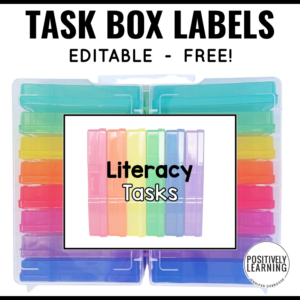
One area I've been making a big push in was creating developmentally appropriate NWEA MAP Testing support materials for my students.
Does your school participate in MAP testing? The NWEA is an adaptive, computerized test that students take three times per school year:
- Beginning of Year (September)
- Mid-School-Year (January)
- End of Year (June)
I have some mixed feelings on how the test collects data…more on that in a moment, but one thing I REALLY appreciate, is how we can measure growth from one testing period to the next.
As a special educator, I have provided accommodations individually and in small groups throughout testing sessions. I've definitely seen every question combination covering each Common Core Standard at least ten times apiece!
The test continues to adapt based on how students answer each question. It's really an interesting test to observe.
Content is measured with RIT scores (Rasch units) and the national norms for first grader students are starting first grade around the 160's and ending in the late 170's. The actual test is taking questions from RIT bands above, below, and everywhere in between.
Standardized testing is non-negotiable in many schools, so let's start with the positive:
PRO – Measuring Growth
This is a HUGE benefit versus measuring mastery of specific skills.
Mastery is probably what we're used to when thinking about grades. Thinking about undergrad… you may achieved a 85% or maybe a 94% overall. That's really great, BUT what if you started the beginning of the year around 94%? Did you really learn and grow during the year? Student growth can be difficult to measure with a mastery score.
One more example – a student is demonstrating 65% mastery. Uh oh, that's a concern… or is it? What if that same child started the year off below 20%? WOW, that's amazing growth!
If a child is performing outside the parameters of what's been determined as the “norm” for a grade level, measuring growth can provide more information on what's working (and what's not).
CON – Is the data accurate?
Knowledge is power and data can provide us with helpful information on how our students are learning.
But are we measuring content (i.e.: math and reading), or… something else?
Through observing the test many times, I noticed that the LANGUAGE of the questions was often a barrier. Students may have known the content, but didn't fully understand what the question was asking. The majority of my students also receive speech and language services focused on receptive and expressive skills, so it makes sense that language usage plays a BIG role in their testing experience and outcome.
CONCLUSION – Focus on language
In my small learning groups, I began asking questions using language sentence stems similar to the test. Is this teaching to the test? No way. This is about improving listening to directions and developing test taking skills. We developed a five-step test taking process – read more about it here.
Did this testing practice approach work?
From Fall to Spring, my students made 158% growth in Math and 246% growth in Reading!
Here's a closer look at the NWEA MAP testing support materials we used:
NWEA is aligned with Common Core, so even if your school doesn't participate in MAP Testing, the cards still feature the exact academic skills your K-2nd students need.
Add these language-focused resources to your daily routine. Hope these tips help!

Hi there.
I'm Jennifer!
I’m Jennifer and I was a special educator in the elementary school setting over the past decade. I entered the classroom every day dedicated to making learning inclusive AND engaging.


















